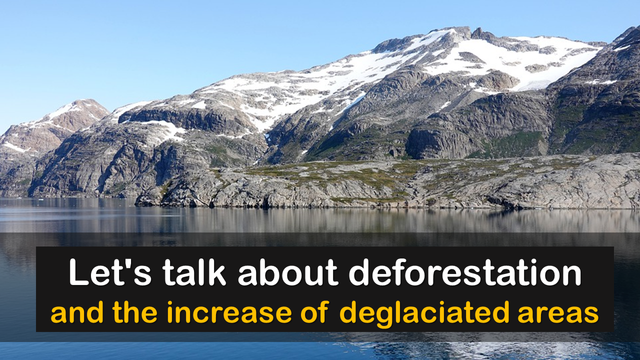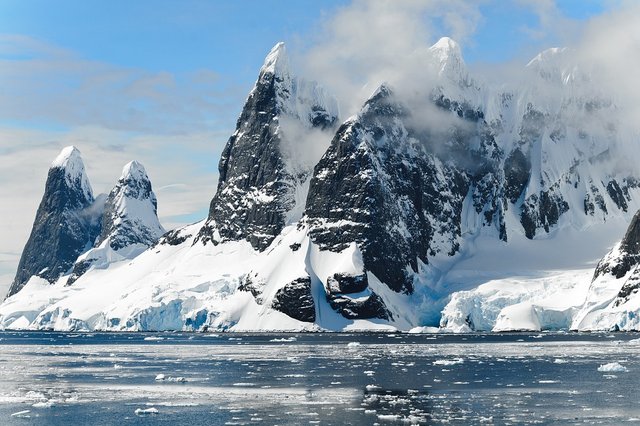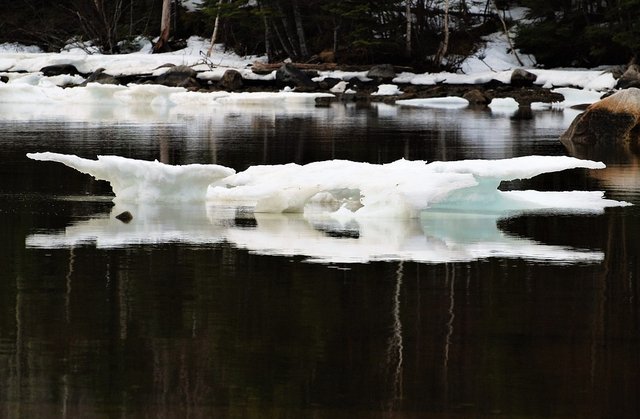Let's talk about deforestation and the increase of deglaciated areas

We take this opportunity to share with the entire academic community of the Steem social platform, especially with the members of our #HeartSTEM community, information related to the negative results of deforestation as an anthropogenic practice on climate change, and its direct effect on polar ecosystems.
Introduction
It has been repeatedly stated that deforestation is one of the human-induced practices that, year after year, affects millions of hectares on a global scale, an element that has a direct impact on climate change patterns, because deforestation generates increases in CO2 concentrations at the ecosystem level.
In this sense, and even though the Covid-19 pandemic probably caused a reduction in the levels of deforestation, and with it a clear decrease in CO2 emissions into the atmosphere, the main reference gas that accelerates the greenhouse effect and climate change, it is worth mentioning that despite these reductions, ecosystems continue in a frank deterioration.
Among the ecosystems that continue to deteriorate are the polar habitats, spaces that have been clearly affected, if we consider the constant meltdown that the gelified zones of our planet Earth are experiencing. Consequently, the objective of this publication is to socialize some of the repercussions of deforestation and climate change on the cryptogamic areas of the polar regions.
Contextualization
Pandemic and climate emergency
Although humanity is living a crucial moment, where the most urgent thing is to stop the pandemic, intuitively it will have to look back and analyze the time that has been lost to counteract the climatic emergency, because, according to recent research, there is a constant meltdown in the polar regions, where deglaciated surfaces (without ice) highly colonized by lichens, algae and mosses are currently being appreciated.

Fi.g 2 The planet experiences a constant meltdown in its polar regions. Public domain image, Author: Girlart39, 2014
Cryptogamic areas
Day after day, new deglaciated surfaces (without ice) covered by cryptogamic areas (polar soils discovered with enzymatic and bacterial potential) are registered, an action that simultaneously generates modifications in the levels of water bodies such as oceans, seas, lakes, rivers, and groundwater, and with it the loss of extensive terrestrial areas.
It is worth mentioning that cryptogamic areas are naturally regions or small areas where vascular plant species grow, i.e. cryptogamous plant specimens that do not contain seeds, such as mosses and lichens that grow and develop generally in the coastal areas of the sub-Antarctic regions and in the Antarctic maritime areas, but as a result of climate change and strong deglaciation, cryptogamic areas have been extending and occupying polar hectares that have experienced thawing.

Fig. 3 Deforestation and climate change have led to a strong deglaciation and expansion of cryptogamic areas. Public domain image, Author: Girlart39, 2014
The pandemic and climate emergency represent a clear example of the biological consequences of climate change, and as the deterioration of natural ecosystems progresses, the appearance of more and more viral diseases will be increasingly evident, and simultaneously there will be negative consequences on ecosystems, one of the evidences of the harmful effects can be found in the statistics of deaths by Covid-19, while at the geographical level the direct consequence is noticeable in the phenology and the displacement of the sea level on land areas of higher elevation.
The appearance of viral diseases and the increase of cryptogamic areas are situations that merit urgent responses, in the search to generate new balances, where protocols are clearly established to regulate the irrational practices of induced deforestation for industrial purposes.
CONTRIBUTIONS TO THIS PUBLICATION
- In closing it is necessary to remember that this retreat of the glaciers and the consequent biological succession that is developing in the polar ecosystems, are reasons for reflection in the search to stop the irrational practices of deforestation that are executed on the planet, because all this will bring distortion in the normal behavior of the climate and therefore adverse climatic conditions.
BIBLIOGRAPHICAL REFERENCES CONSULTED AND CITED:
[1] Jaswant S., Rudra P., and Singha R Influence of climate change on Antarctic flora. Polar Science. 2018; 18: 94 - 101. Article: Online Access
[2] Vanneste T., Michelsen O., Jessen B Impact of climate change on alpine vegetation of mountain summits in Norway. Ecological Research. 2017; 32: 579 – 593. Article: Online Access
[3] Khan A Why would sea-level rise for global warming and polar ice-melt?. Geoscience Frontiers. 2012; 10: 2. Article: Online Access
[4] Olech M., Maja L., Agnieszka A., and Hubert M Contemporary Changes in Vegetation of Polar Regions. Papers on Global Change IGBP. 2011; 18; 1: 35 – 51. Article: Online Access
[5] Wolfgang E., Weber B., Burrows S Impact of cryptogamic covers on the global cycles of carbon and nitrogen. Nature Geoscience. 2012; 5; 7: 459 – 462. Article: Online Access
OBSERVATION

